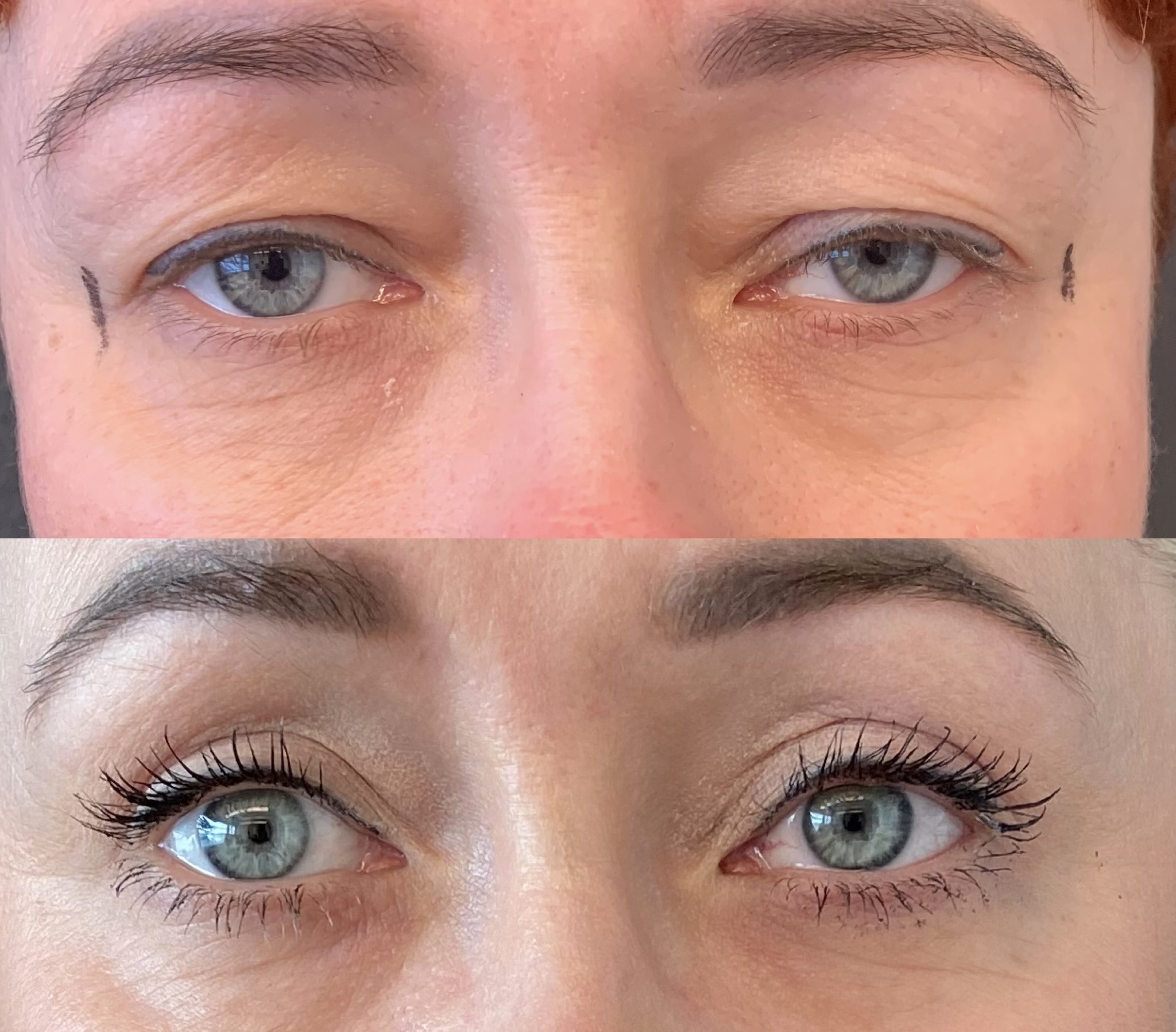Blepharoplasty, also known as eyelid surgery, is a procedure designed to correct drooping or puffy eyelids by removing excess skin, muscle, or fat (herniation).
The surgery provides effective and long-lasting results and can address both upper and lower eyelids. Blepharoplasty can also be combined with a surgical brow lift, performed through the same incision without creating an additional scar. This is suitable for individuals whose eyebrows sit below the brow bone.
A consultation with a plastic surgeon and/or Dr. Mari Laasma is required before the procedure.
Blepharoplasty can help to:
- Refresh tired or sad-looking eyes
- Improve the visual field
- Reduce signs of aging
- Eliminate under-eye bags
How does blepharoplasty work at Dr. Mari Laasma Laser and Aesthetic Clinic?
We perform both upper and/or lower eyelid surgeries.
The method is selected by the surgeon based on individual needs. The procedure is performed under local anesthesia, and the patient can return home the same day.
The operation takes about 30 minutes for the upper eyelids and around 1 hour for the lower eyelids. After the procedure, the patient stays in a recovery room with cold compresses applied to the eyes.
To reduce swelling and bruising, we recommend placing a cold gel pack (from the freezer) on the surgical area for 20 minutes every 2 hours during the first few days, starting the day after the surgery.
Recovery from upper eyelid surgery typically takes about 7 days, after which stitches are removed and light makeup can be applied. You will already look quite presentable without needing to hide behind sunglasses.
Recovery from lower eyelid surgery generally takes around 2 weeks.
In both cases, we recommend lymphatic drainage massage after stitch removal to reduce swelling more quickly – this is also available at our clinic.
We will provide you with creams for scar treatment and instructions for at-home lymphatic massage. If stronger bruising occurs, we can support faster absorption with IPL treatment if needed.
Before the surgery:
- Do not undergo the operation if you have a cold, fever, herpes (even in healing phase), or if you are pregnant or menstruating.
- Inform the doctor of any health issues, sensitivities, or allergies.
- Smoking increases the risk of postoperative hematomas and impaired wound healing.We strongly recommend quitting at least 1 month before the scheduled operation. Smoking is strictly prohibited on the day of the surgery.
- Avoid alcohol for at least 24 hours prior to surgery.
- If you need a sick leave certificate, please inform Dr. Laasma immediately before the operation.
After the surgery:
- After 24 hours, you may gently wash the wound under running water. Pat dry with a clean gauze or towel.
- Avoid sauna, baths, and swimming pools for 2 weeks.
- For the first few days and on the day after surgery, apply a cold gel pack (from the freezer) to the surgical area for 20 minutes every 2 hours. Always place a clean gauze between the cold pack and skin.
- A small amount of bleeding on the day of surgery is normal. Apply moderate pressure with a clean gauze pad for at least 5 minutes to stop it.
- For pain relief, you may take Paracetamol or Ibuprofen as needed.
- Avoid physical exertion (exercise, lifting, running, jumping, etc.) and prolonged bending forward for one week after the operation.
- After wound dressings are removed and the wound has fully healed with crusts gone, apply silicone scar cream to the area.
- Avoid stretching or rubbing the wound area during the first week post-surgery.
- Makeup can be applied to the area 7–10 days after the procedure.
- You may return to work one week after the operation.
- Sutures should be removed one week post-surgery (preferably at our clinic).
- If you experience eye irritation, redness, discharge, or signs of wound infection (such as increased pain, fever, swelling, or redness), contact Dr. Laasma immediately.
- For faster swelling reduction and better scar healing, we recommend visiting a lymphatic massage therapist.
- If a scar becomes unusually red, itchy, raised, or unsightly, it may be a keloid scar – please schedule a follow-up with Dr. Laasma.
- We recommend a follow-up visit 6–12 months after the surgery to assess the final result.
- Protect the skin from UV exposure for 1 year following the procedure.

